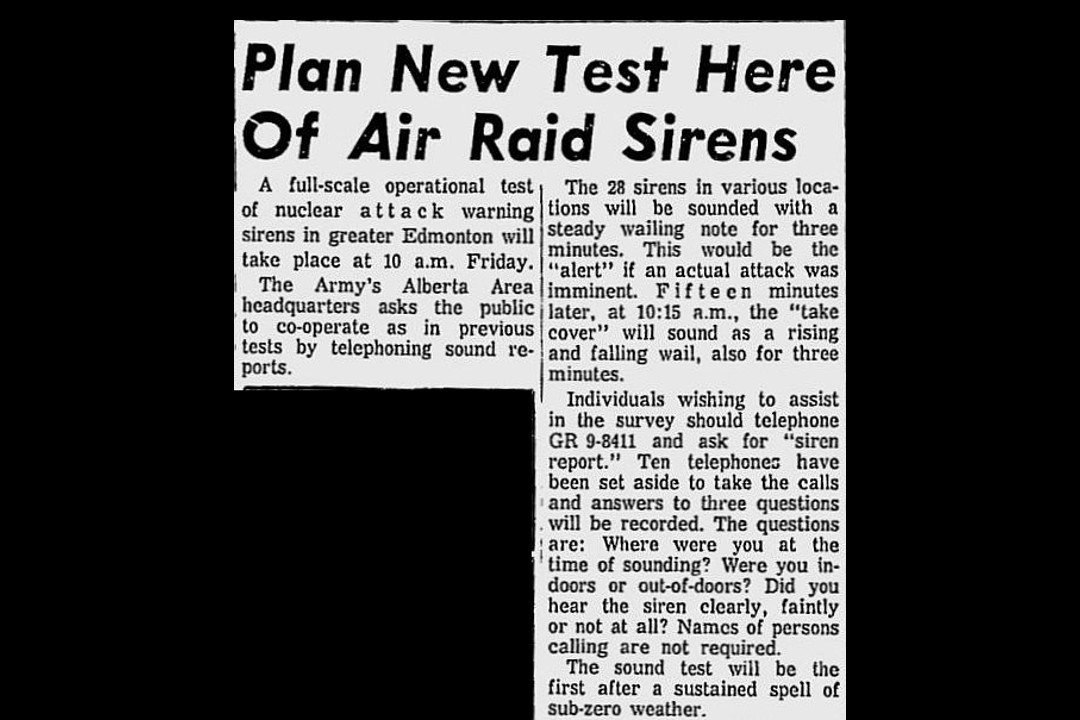On this day in 1962, Edmonton tested its system created to warn residents of an impending nuclear attack.
The test made for what sounds like a stressful Friday morning. According to the Edmonton Journal, 28 air-raid sirens spread across the city sounded a "steady wailing tone" for three minutes starting at 10am. Fifteen minutes later, they let out another, different three-minute alarm.
The first air-raid sirens arrived in Edmonton in 1951. The Second World War was still fresh in everyone's mind. Images of devastation created by bombing raids in Europe and the nuclear blasts in Hiroshima and Nagasaki were, too. Military and municipal leaders thought a warning system that could alert people of an attack was needed in case war broke out again.
In the early '60s, more sirens were installed around the city. Today, 60 years removed, we might chalk these actions up to Cold War paranoia. But at the time there was a strong belief Edmonton was a top target if war broke out between the United States and the Soviet Union. The city had a strong military presence — Blatchford Field had been a major hub for pilot training and supply missions during the Second World War. During the Cold War, an agreement with the U.S. allowed that country to use the airfield to service heavy bombers and jets.
Aside from the military importance, many also worried Edmonton could be attacked to disrupt North America's access to oil. Edmonton prepared for that potential. In addition to the air-raid siren system, a civil defence force was established to protect people from a nuclear attack. That meant building shelters, including a command centre in MacKenzie Ravine, where people could hide from nuclear fallout. Civil Defence Edmonton also made guidebooks that taught people how to build survival kits and mapped out evacuation routes. There were even pre-recorded radio broadcasts prepared for the airwaves in the event of a nuclear attack on the city.
Luckily, none of it was ever needed. As the years rolled on, many of these relics of Edmonton's Cold War past disappeared. The air-raid siren system was largely dismantled in the '90s. The command centre bunker was sealed and abandoned, although there are hopes that it could be turned into a museum focused on Canada's civil defence efforts.
The possibility of a nuclear missile hitting the city probably is not a top concern for Edmontonians. However, emergency alert systems are still a part of our lives, though we no longer rely on wailing sirens. Cellphones have become one of the primary parts of our modern alert system. In November, Canada performed a nationwide test of its emergency alert system. And just this weekend, Albertans received urgent messages on their phones about the risk of blackouts due to electricity usage in the extreme cold.
This clipping was found on Vintage Edmonton, a daily look at Edmonton's history from armchair archivist @revRecluse of @VintageEdmonton.
Correction: This file has been updated to correct the history of Japanese balloon bombs and their connection to Edmonton.

